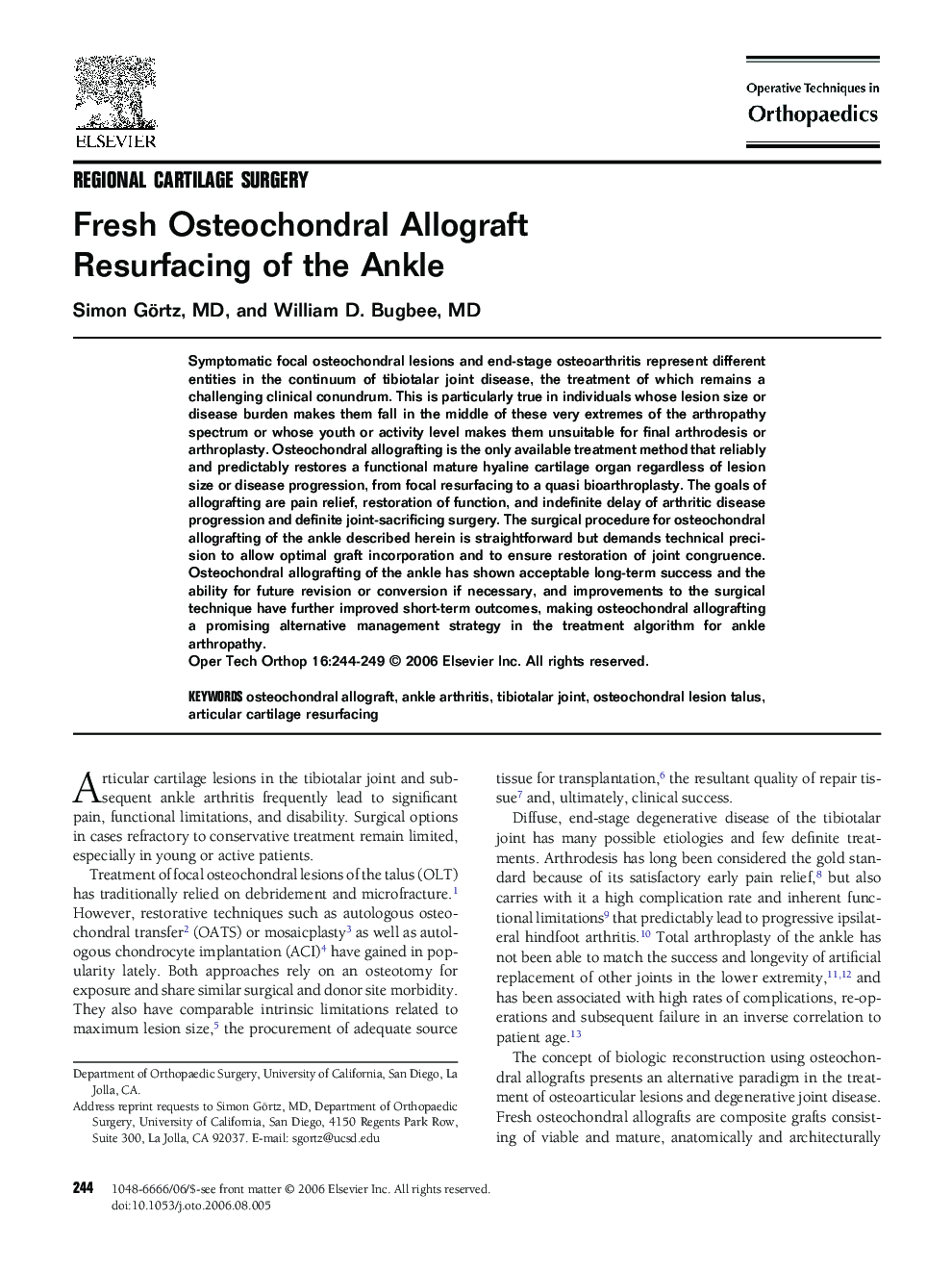| Article ID | Journal | Published Year | Pages | File Type |
|---|---|---|---|---|
| 4079385 | Operative Techniques in Orthopaedics | 2006 | 6 Pages |
Abstract
Symptomatic focal osteochondral lesions and end-stage osteoarthritis represent different entities in the continuum of tibiotalar joint disease, the treatment of which remains a challenging clinical conundrum. This is particularly true in individuals whose lesion size or disease burden makes them fall in the middle of these very extremes of the arthropathy spectrum or whose youth or activity level makes them unsuitable for final arthrodesis or arthroplasty. Osteochondral allografting is the only available treatment method that reliably and predictably restores a functional mature hyaline cartilage organ regardless of lesion size or disease progression, from focal resurfacing to a quasi bioarthroplasty. The goals of allografting are pain relief, restoration of function, and indefinite delay of arthritic disease progression and definite joint-sacrificing surgery. The surgical procedure for osteochondral allografting of the ankle described herein is straightforward but demands technical precision to allow optimal graft incorporation and to ensure restoration of joint congruence. Osteochondral allografting of the ankle has shown acceptable long-term success and the ability for future revision or conversion if necessary, and improvements to the surgical technique have further improved short-term outcomes, making osteochondral allografting a promising alternative management strategy in the treatment algorithm for ankle arthropathy.
Related Topics
Health Sciences
Medicine and Dentistry
Orthopedics, Sports Medicine and Rehabilitation
Authors
Simon MD, William D. MD,
